florida-trader
1395 posts
Dec 11, 2018
7:40 AM

|
Here’s a little jewel that is going in the mail today to a very good customer. Pre-War Marine Band in G with a Black Corian Comb, tuned to Modern Compromise Temperament @ A=442.
I have restored hundreds of pre-war Marine Bands. I very much enjoy bringing them back to life and putting them in the hands of players. Sometimes a vintage harmonica does not want to cooperate and is a struggle to restore. I have even given up on a few and considered them a lost cause -too far gone to bother with. That doesn’t happen often, but it once in a while, it does. And then, there are the times when a harp behaves beautifully and everything falls together perfectly. This is one of those occasions. I am so pleased with how this harp turned out. It is one of the best I have ever had the pleasure to build. It is stunningly beautiful and plays oh so nicely. Here are a few photos for you to enjoy.
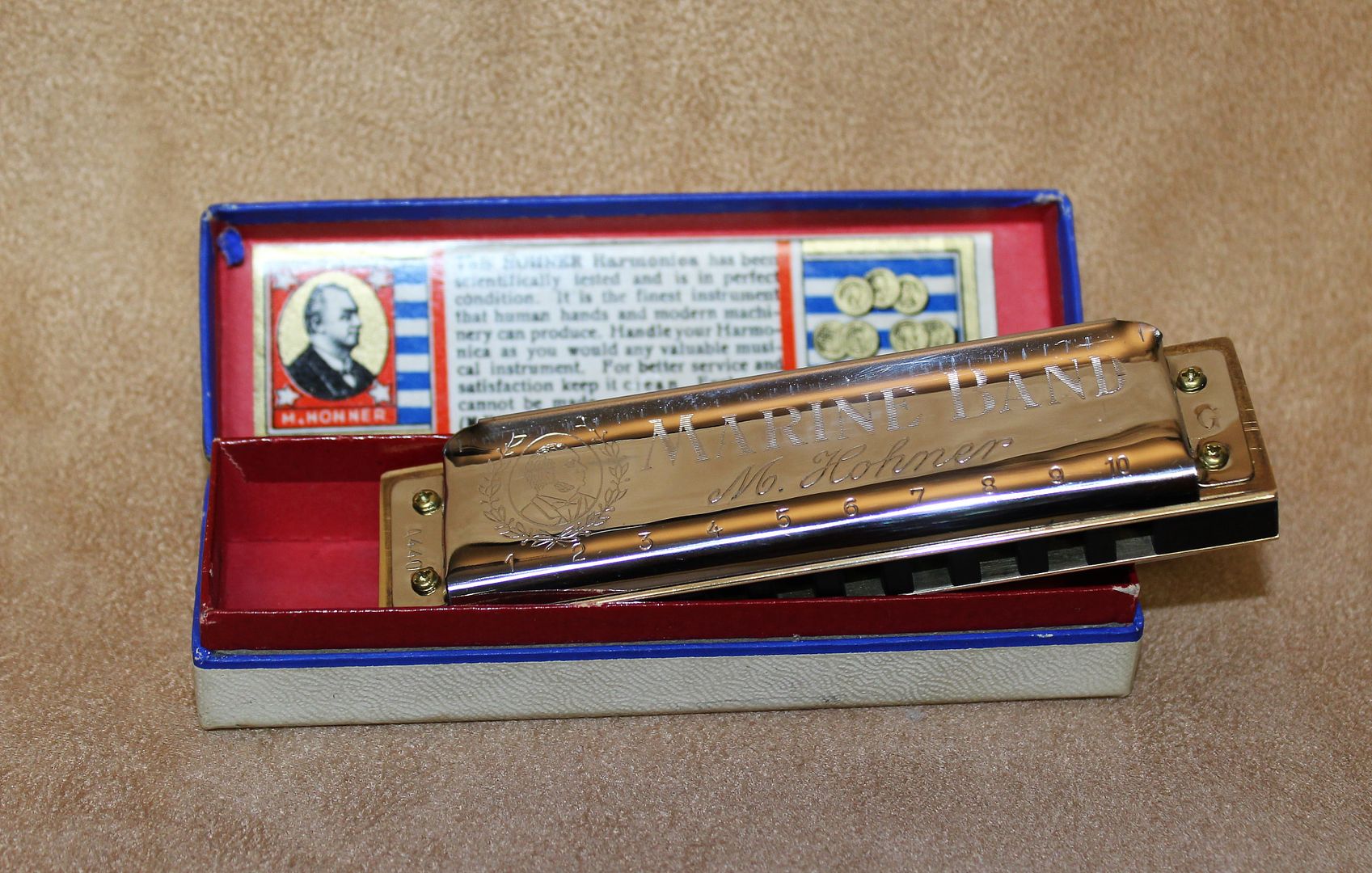
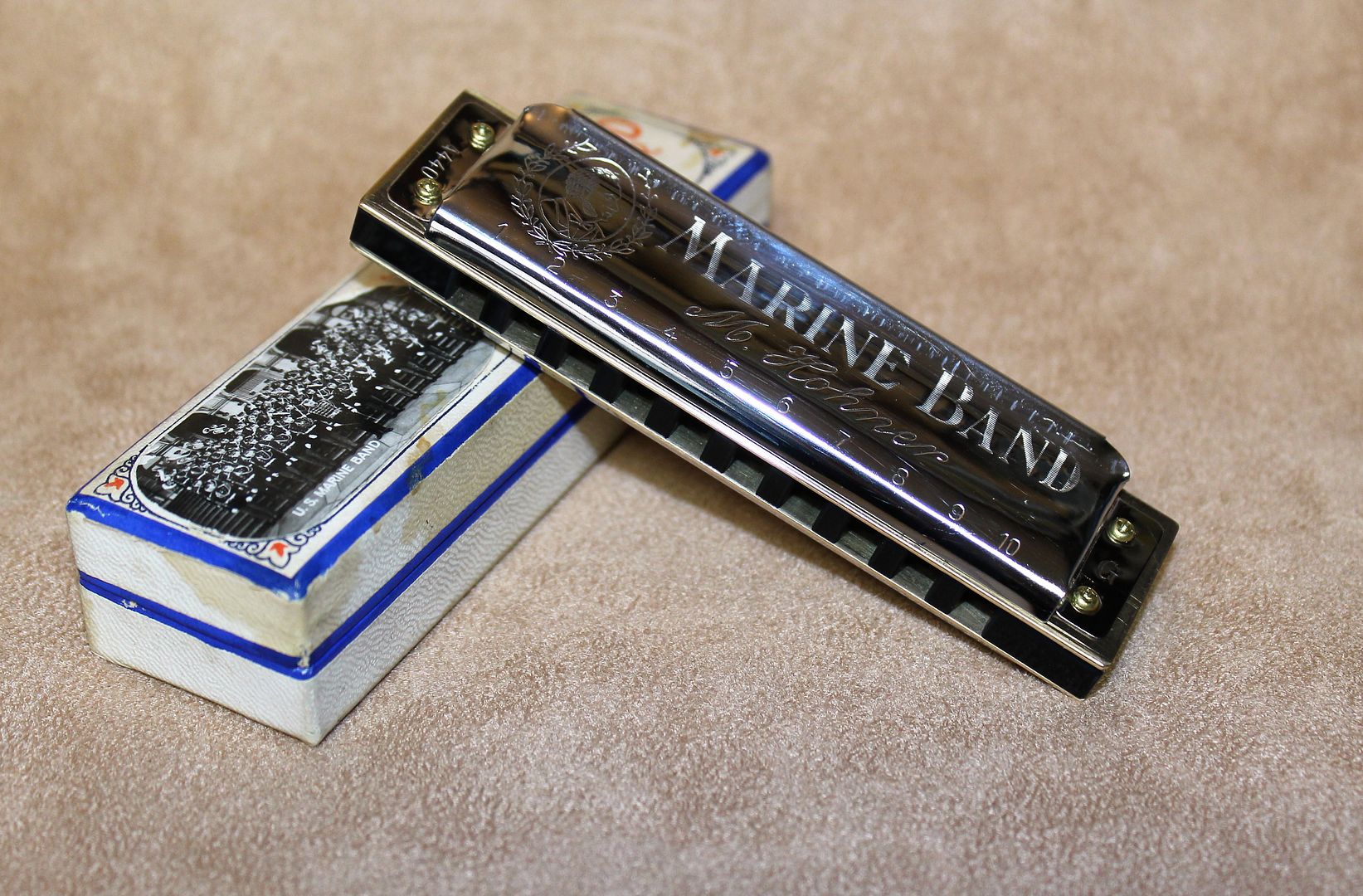

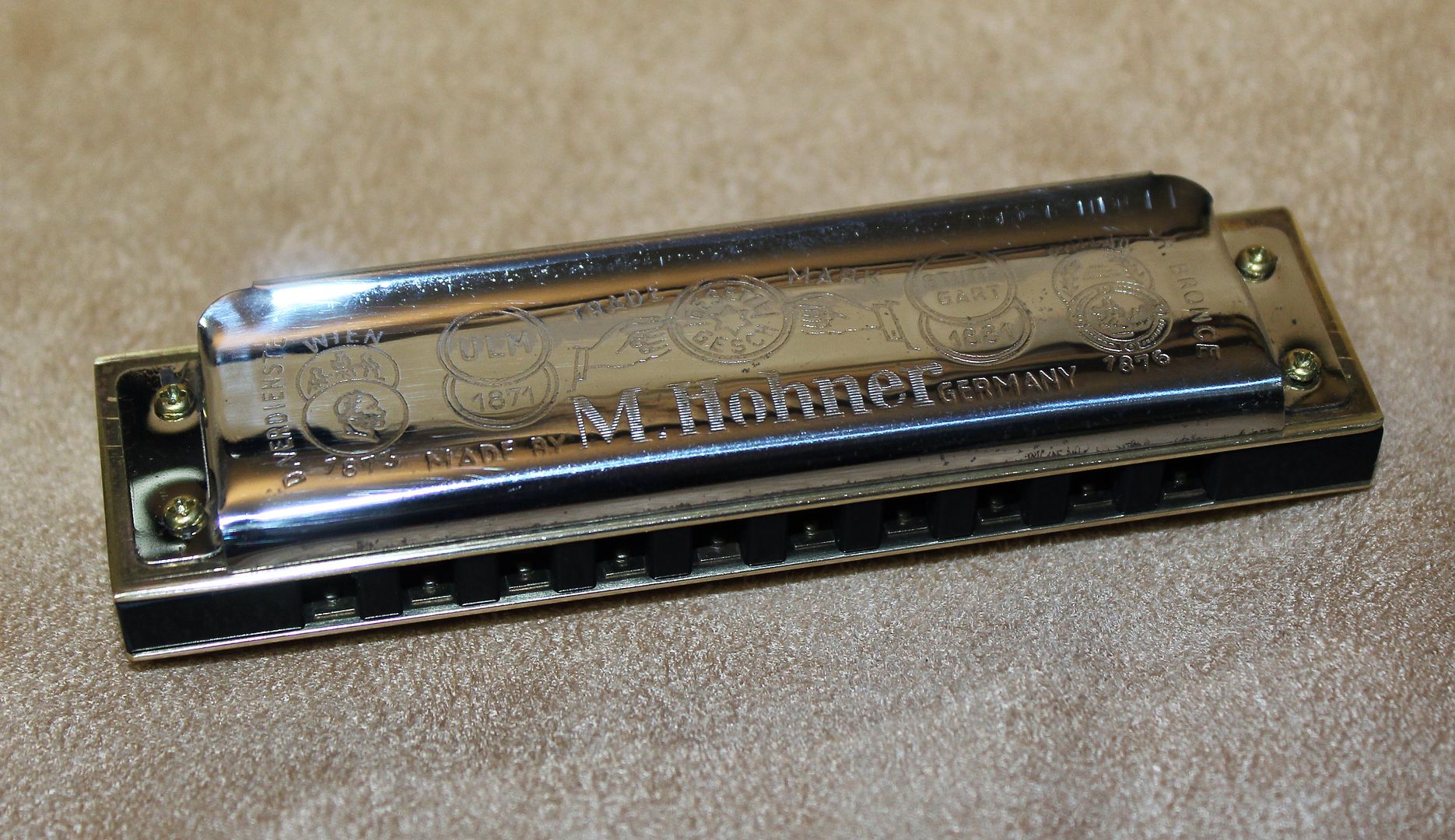
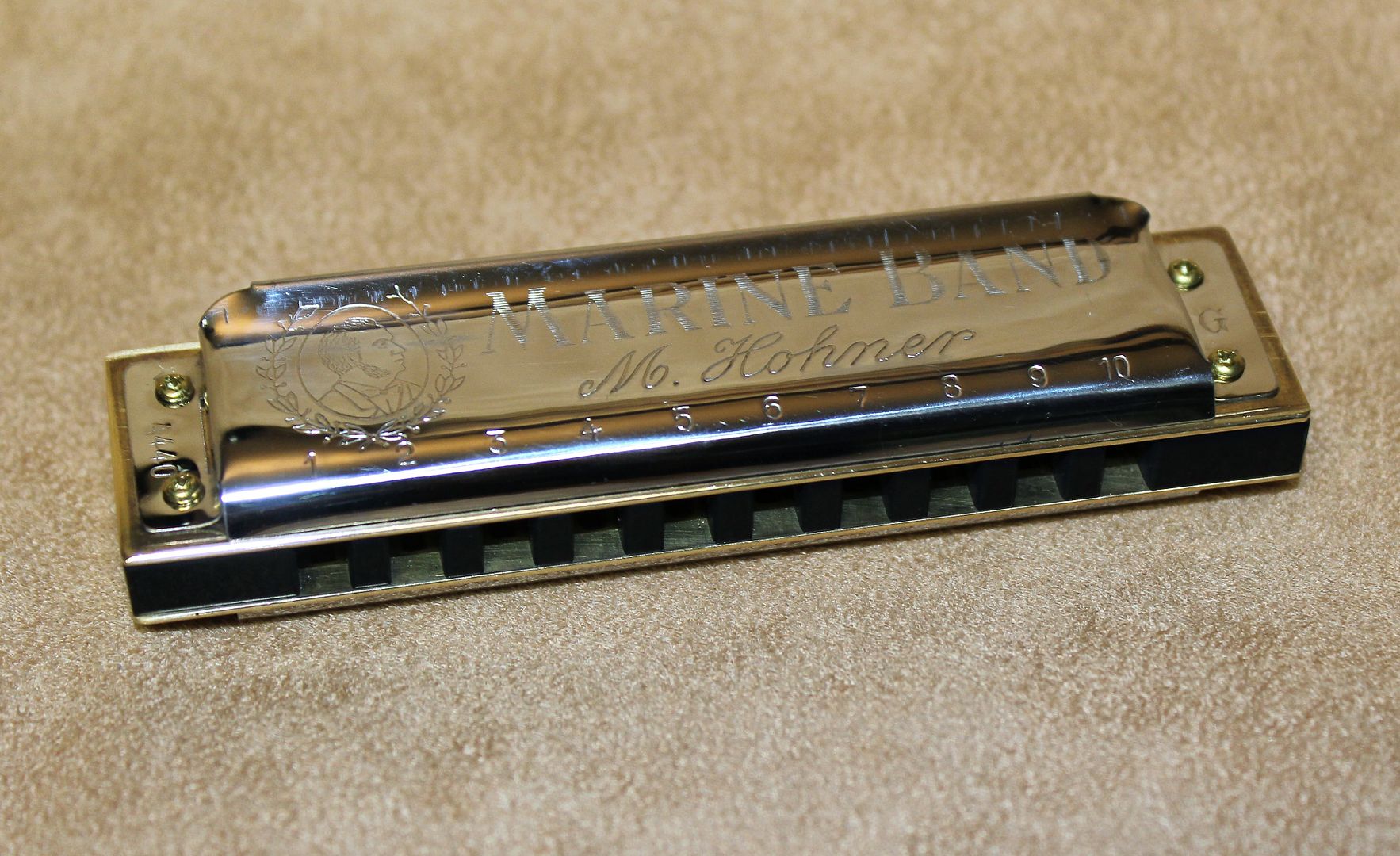
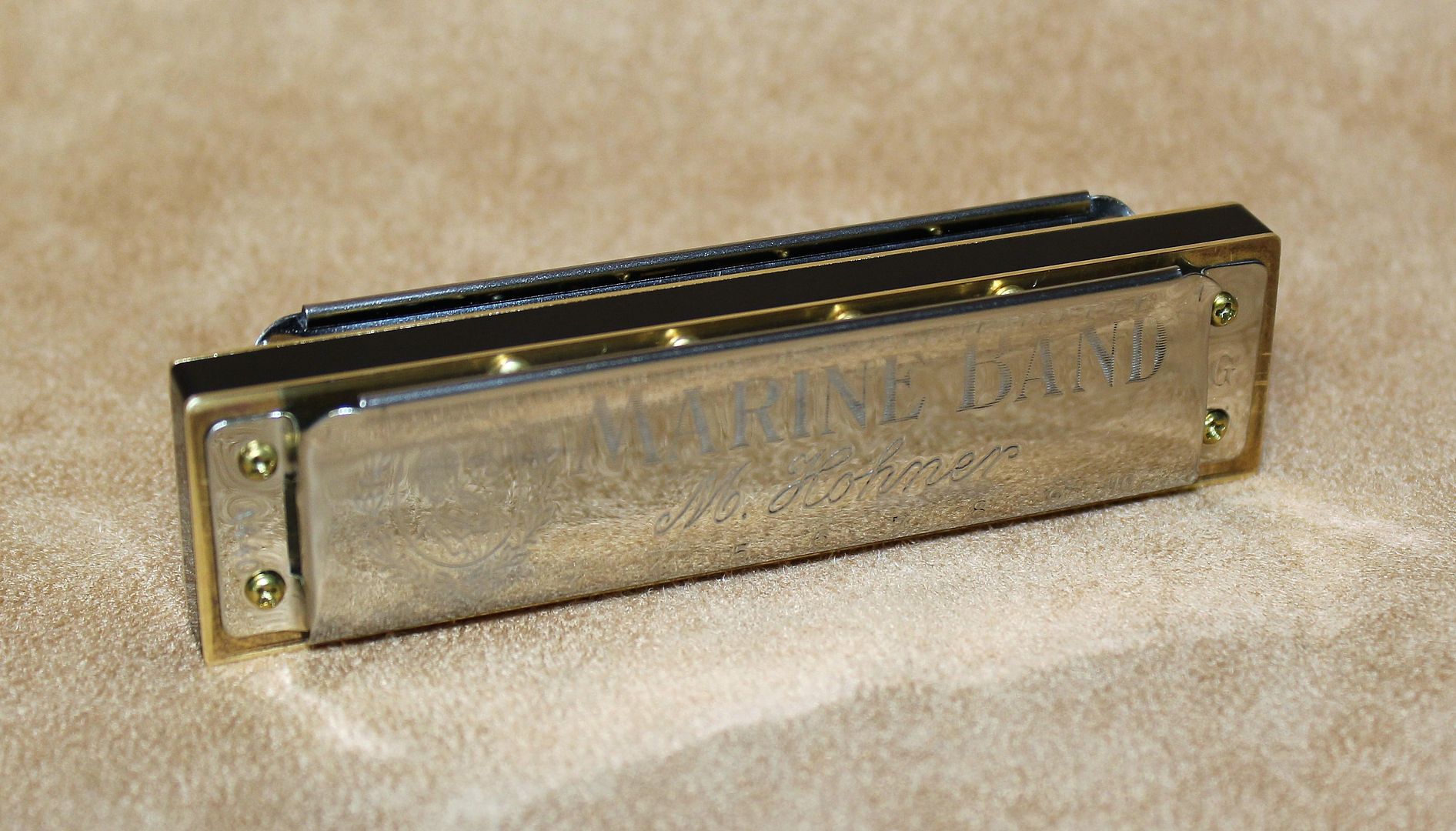
----------
Tom Halchak
Blue Moon Harmonicas
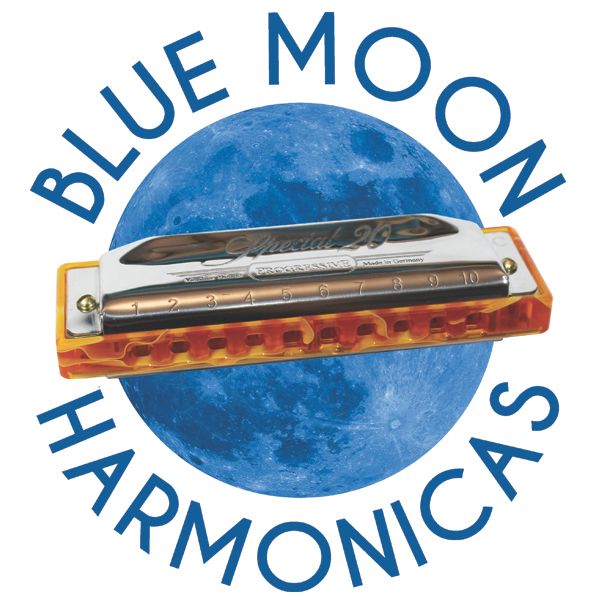 Last Edited by florida-trader on Dec 11, 2018 7:42 AM
Last Edited by florida-trader on Dec 11, 2018 7:42 AM
|
The Iceman
3733 posts
Dec 11, 2018
8:57 AM

|
Some have suggested that the reason these play so well is that the formula for brass was different before the war - and was changed because of its use in war products and remained changed since then.
Do you have any insight?
----------
The Iceman
|
florida-trader
1396 posts
Dec 11, 2018
9:38 AM

|
Iceman - I have heard that theory postulated before. Many of the vintage harps even have “Bell Metal Reeds” stamped on the covers and/or box, which might even support that notion. I do believe the brass in the Pre-Wars is different from what is currently being used. It is softer. I base my opinion on how much effort it takes for me to tune the reeds compared to modern Hohners. Likewise, the phosphor bronze reeds used by Suzuki take more effort than brass and the stainless-steel reeds used by Seydel take even more effort. So, it is something I am sensitive to. Some people believe there is some secret formula to the pre-war brass and it can’t be reproduced today. I don’t buy that. With modern technology I would bet that the pre-war brass can be analyzed and reproduced. I’m getting a little off the subject, but please bear with me. I think that there are a lot of things that are taken into consideration regarding the type of metal used to make reeds. Cost, ease of machining, tone, resilience, rigidity, longevity, etc. etc. are all factors and for whatever reason, Hohner has apparently changed the type of brass they use.
But back to your question. This is just my opinion that has been cobbled together from bits and pieces of information and factoids and deductive reasoning. I think that in the era of the early 20th century, there existed a sort of perfect storm of harmonic manufacturing at Hohner. We all know that harmonicas were invented in the mid 1800’s. It was exclusively a cottage industry. Lots of small manufacturers. Mom and Pop operations. Former watch makers. Everything hand made. I’m sure that during this period there was a lot of trial and error. People were figuring out what worked and what didn’t. By the way, a gentleman named John Cook, who is a master harmonica craftsman in the UK, has recently published a short book about a man named Julius Berthold who was a tool maker in 1866. Herr Berthold developed the machines and tools that helped revolutionize the construction of the harmonica and, no doubt, improve quality and consistency. Somewhere about this time along came Matthias Hohner who apparently not only knew how to make harmonicas but was also a very good businessman. Hohner started gobbling up the smaller harmonica companies and, it is a safe bet, hiring all their craftsmen to work in the Hohner factory. On some of the old Hohner boxes you will see language to the effect that says, “Hohner employs 6,000 workers and produces 20 million harmonicas a year”. No small feat in the early 1900’s. By the early 1900’s I suspect there were now second and third generation harmonica makers who knew their craft very well. Hohner had state of the art equipment and Germans are famous for their precision engineering. Perhaps the brass is the secret sauce, but I tend to think that it was a combination of skilled craftsmen, the German mindset of making quality products and cutting-edge equipment. A lot of that changed with the inception of WWII and perhaps has been lost forever. That said, Hohner makes some very good harps today.
----------
Tom Halchak
Blue Moon Harmonicas

|
Crawforde
179 posts
Dec 11, 2018
4:32 PM

|
That is beautiful.
Did you replate those covers, or is that the original metal polished up?
|
Sundancer
273 posts
Dec 11, 2018
4:56 PM

|
I’ve got a question: why is it that ya only hear about Hohners as “pre war harmonicas”? If Seydel has been around since 1847 shouldn’t there be old Seydels around somewhere?
|
SuperBee
5680 posts
Dec 11, 2018
11:10 PM

|
Nice looking job, Tom.
Sundancer, we get a few ancient harps in Australia. The thing was very popular in the 1930s: the standard musical instrument in schools of the day.
I’ve seen a few old Seydel-made harps under various names. Marine bands of that era seem quite rare here. I found a Hohner ‘songband’ from the 30s which is almost a Marine Band, but it is not a good player. I discarded the comb and put it on a good custom comb but it’s still terrible. The reed plates are too bowed and I’m not desperate enough or bored enough yet to straighten them.
I’m not a believer in the ‘reeds of unobtainium’.
|
florida-trader
1397 posts
Dec 12, 2018
6:06 AM

|
Crawforde - those are the original covers polished up. Obviously, they are in great condition. One of the secrets to restoring harps is being careful about what you buy. Don't buy junk. It is a waste of time. Buy stuff that is in decent condition and that has potential.
Sundancer - that is a good question. I have talked to the Seydel guys at SPAH about that a little. Dr. Bertram Becher, who is a fine player and a consultant to Seydel has a personal mission to gather as many vintage Seydels as he can. I have given him a few that I've found. The answer is in line with something I alluded to above. Herr Hohner and his heirs were master marketers. They exported to the US and the UK. Apparently Seydel did not. Even though Seydel is the the oldest harmonica manufacturer still in existence and they make fine harmonicas today, it doesn't mean that they were the most successful or best run harmonica company (no disrespect). The vast majority of the pre-war Marine Bands I find are here in the U.S. The other part of the answer is that because Seydel has the misfortune of being behind the Iron Curtain after the war, not a lot of the old harps survived. That's why they are on the rare side and why Dr. Becher is trying to preserve some of the history. Just like my comments above - I can't say that this is fact. This is my opinion based upon my exposure to people and bits and pieces of information.
----------
Tom Halchak
Blue Moon Harmonicas
 Last Edited by florida-trader on Dec 12, 2018 11:12 AM
Last Edited by florida-trader on Dec 12, 2018 11:12 AM
|
Sundancer
274 posts
Dec 12, 2018
9:52 AM

|
Thanks for answering my query Tom & Super Bb. I’m starting to wonder if marketing isn’t the world’s second oldest profession? Happy Holidays!
Last Edited by Sundancer on Dec 12, 2018 9:53 AM
|
SuperBee
5681 posts
Dec 12, 2018
2:08 PM

|
Here’s a related article on the Australian Seydel harps. An Australian distributor imported them and had their own brand names, not unlike Fender and Vox have been doing in the last few years.
https://www.google.com.au/amp/s/amp.smh.com.au/money/investing/collectors-hunt-for-old-australian-harmonicas-20140808-101znp.html
|